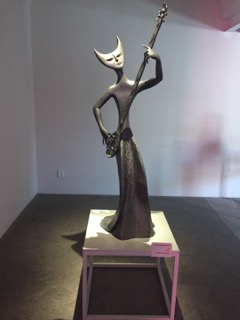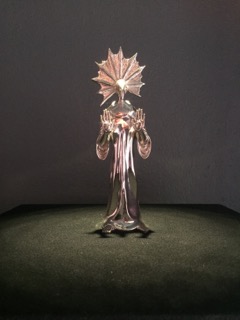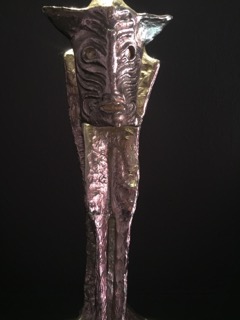Spending two months in Mexico in the Autumn
of 2018 was a significant part of my life. It has left me with an
enduring love for this big and diverse happy country with its'
emotional and generous people.
Despite its' problems there is a happiness and love of life which seems to pervade all sectors of life enhanced by colour, sun, and music.
I have been fortunate to visit the two museums in San Luis Potosi and Xilitla, Mexico dedicated to Leonora Carrington and the Surrealist 'garden' Las Posas, Xilitla, created by Edward James. I knew little about these two
artists before coming here but it has been a visual and rivetting experience to enter
into their dreamlike and magical worlds.
This is a brief account of Leonora Carrington and links to a page on Edward James
artists, with information mainly from Mexican guides, much more detail
can be found on the net but here I have put in photographs which I have
taken of their works, which bring more than any written description I
can provide.
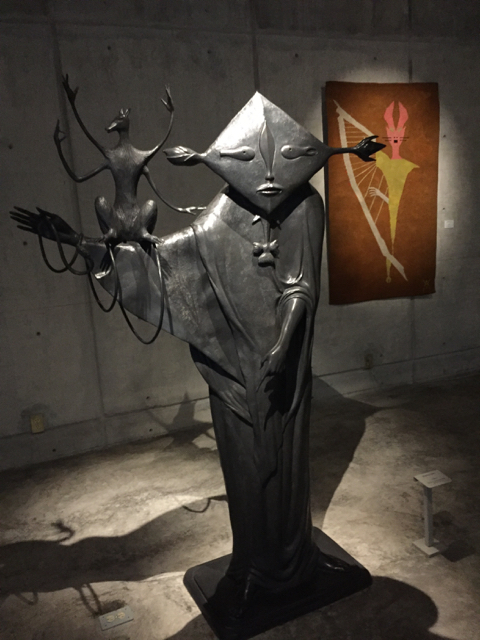
|
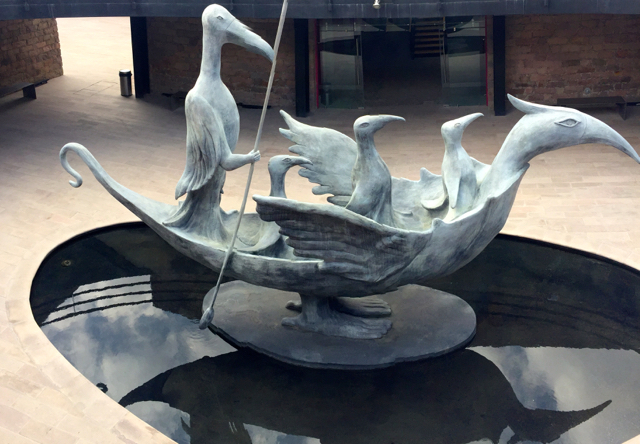 |
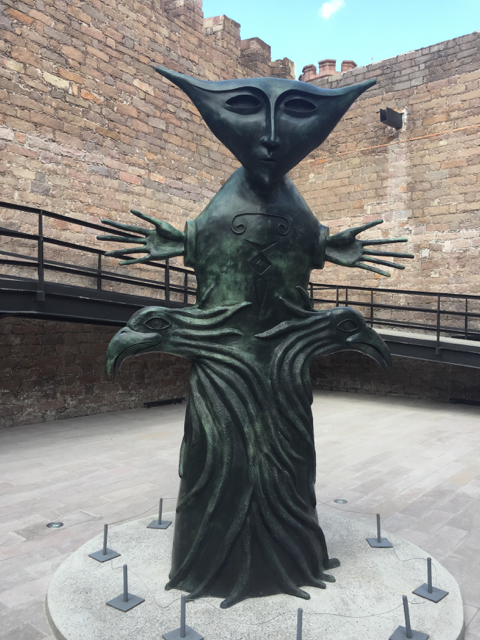 |
Leonora Carrington and her dogs in Xilitla
Leonora and her dogs in Xilitla
'a photograph in the Museum'
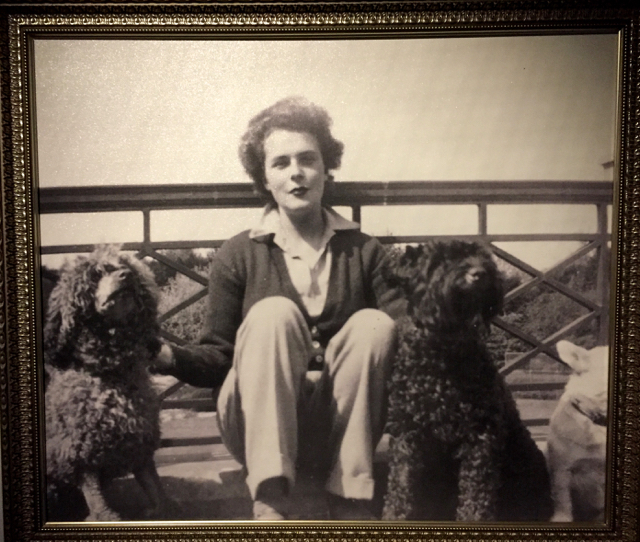
|
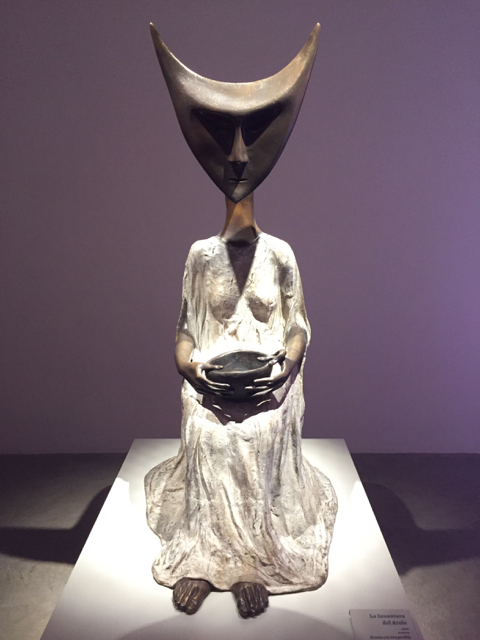 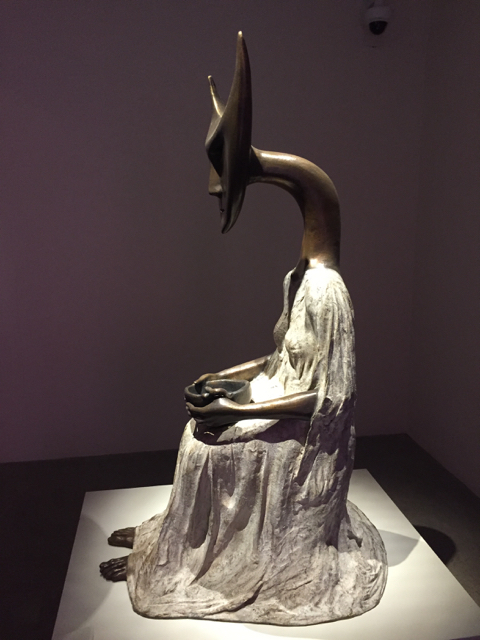
|
And then we saw the daughter of the Minotaur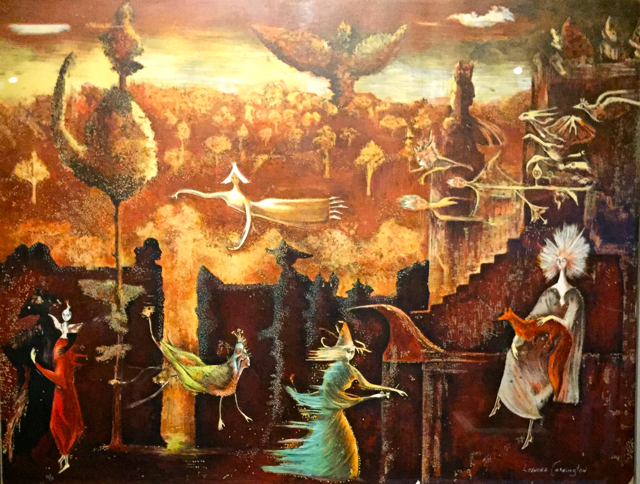
|
Leanora and Chiki Weisz in San Lus Potosi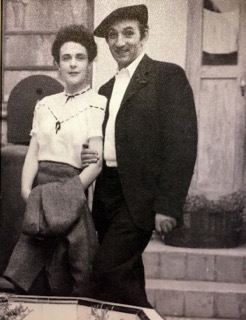
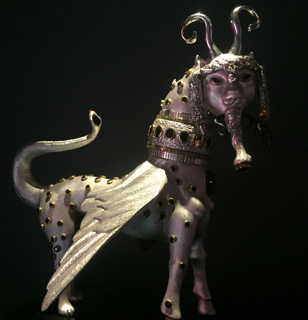
Images taken in San Luis Potosi and Xilitla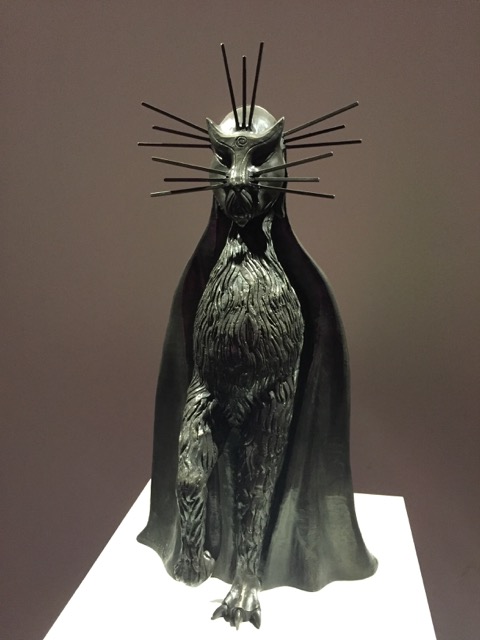 |
Leonora Carrington was
born in Lancashire in 1917 into a wealthy family. Always difficult and
rebellious, she was expelled from two schools. At 18 she met the
married Max Ernst who was twenty six years older than her and the
relationship being much disapproved of by her family, they left for
Paris.
When
the war broke out thepair went to the South of France and Ernst was
arrested first as a
German spy and then by the Germans because his art was degenerate.
Leonora fled to Spain where she had a breakdown and was forcibly
hospitalised under cruel conditions by her parents. Her nurse helped
her escape to Portugal where she was taken in by the Mexican Embassy
eventually marrying the consul, Renato Leduc. After the war, Leanora
and her husband came to Mexico but the marriage didn't
last and she met and married an Hungarian photographer, Chiki Weisz who
was the father of her two sons.
San Luis Potosi have turned the imposing old State jail building
into Los Centro de Artes with much dedicated to Leonora's work . The
project was overseen and helped by her son, Pablo Weitz.
I spent much time in this building with its thick walls, large
courtyard and pink painted cells without doors all opening into this
fantastical world of surrealism in both large and small bronze and
silver sculptures. A dark area, the Hall of Mirrors enchants with an
animated version of the first part of Carrington’s book, White Rabbits.
The animation of the story set on the imaginary Pest Street, directed
by Luis Cabrera, illustrated by Richard Zela and dramatized by Beatriz
Cecilia, sees ghost-like figures and insects floating from mirror to
mirror and is as eerie and delightful.
The Museum in Xilitla is smaller with more photographs of Leonora and the house where she stayed while visting Edward James
Leonora Carrington redefined the imagery of women. Her surrealism combined magical imagery, distorted
religious iconography and was greatly influenced by Mayan and Mexican
folklore. She was, above all, an artist and within that scope come
sculptures, paintings, lithographs, set designs and her books. In later
years, she was one of the founders of the Woman’s Liberation Movement
in the 1970’s in Mexico where she died, age 94.
A
translated text from her on a wall alongside her work in Xiltla says,
‘I am as a shell of the life that covers the divine in the human
animal, the life force that directs every living species, the amoeba
...the lion....
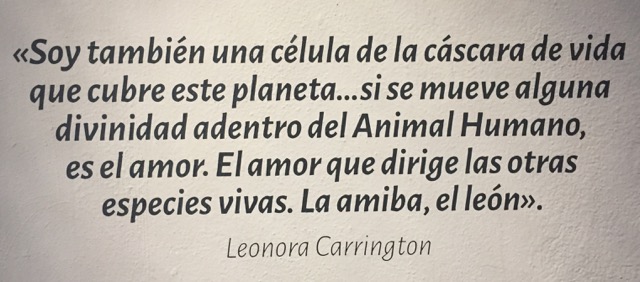  |
|
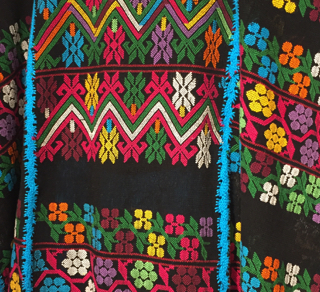 MEXICO
MEXICO










